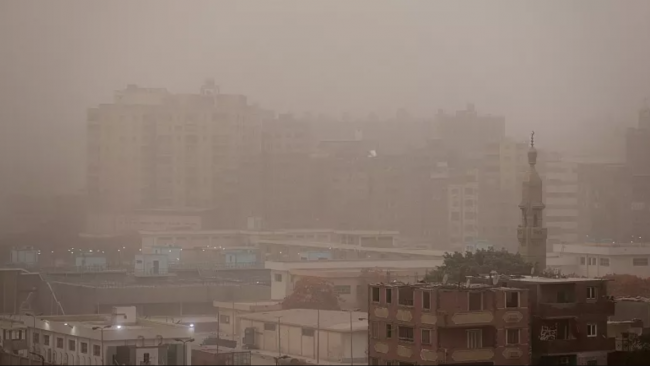Articles Menu

Nov. 15, 2023
The world is losing 1 million square kilometres of productive land a year to sand and dust storms, the UN body in charge of fighting desertification has warned today.
The world is losing 1 million square kilometres of productive land a year to sand and dust storms, the UN body in charge of fighting desertification has warned today.
Sand and dust storms are an underappreciated problem being made “dramatically” more frequent by human activity in some parts of the world.
An estimated 2 billion tonnes of sand and dust now enter the atmosphere every year - the same weight as 350 Great Pyramids of Giza.
With far-reaching effects well beyond where they form, fluctuations in intensity, size and length can make sand and dust storms “unpredictable and dangerous”, experts from the UN Convention to Combat Desertification (UNCCD) say.
Known by many local names such as the sirocco, haboob, yellow dust or the harmattan, these storms form in low-latitude drylands and sub-humid areas where vegetation is sparse or absent.
The dried-up Aral Sea between Kazakhstan and Uzbekistan, for example, is a major source of sand and dust storms.
Though they are a common natural phenomenon, the problem is being exacerbated by human activity. Deforestation, overgrazing and the overuse of water cause deserts to spread, increasing the likelihood of these storms.
Drought and extreme temperatures brought by climate change only serve to amplify these factors.

“Sand and dust storms have become increasingly frequent and severe having substantial transboundary impacts, affecting various aspects of the environment, climate, health, agriculture, livelihoods and the socioeconomic well-being of individuals,” says Feras Ziadat, chair of the UN Coalition on Combating Sand and Dust Storms.
Experts from the UNCCD now attribute more than a quarter of the problem to human activities. In some areas, desert dust has doubled in the last century.
“The sight of rolling dark clouds of sand and dust engulfing everything in their path and turning day into night is one of nature’s most intimidating spectacles,” says Ibrahim Thiaw, UNCCD's executive secretary.
“It is a costly phenomenon that wreaks havoc everywhere from Northern and Central Asia to sub-Saharan Africa.”
At their source, they damage crops, affect livestock and strip the topsoil. Where they deposit the material they are carrying, they pose a threat to those with health problems like respiratory disease - especially where they combine with local industrial pollution.
“The accumulation of impacts from sand and dust storms can be significant,” Ziadat says.
The UNCCD has called for better land management to restore damaged land as well as improved early warning systems to boost resilience to these impacts.